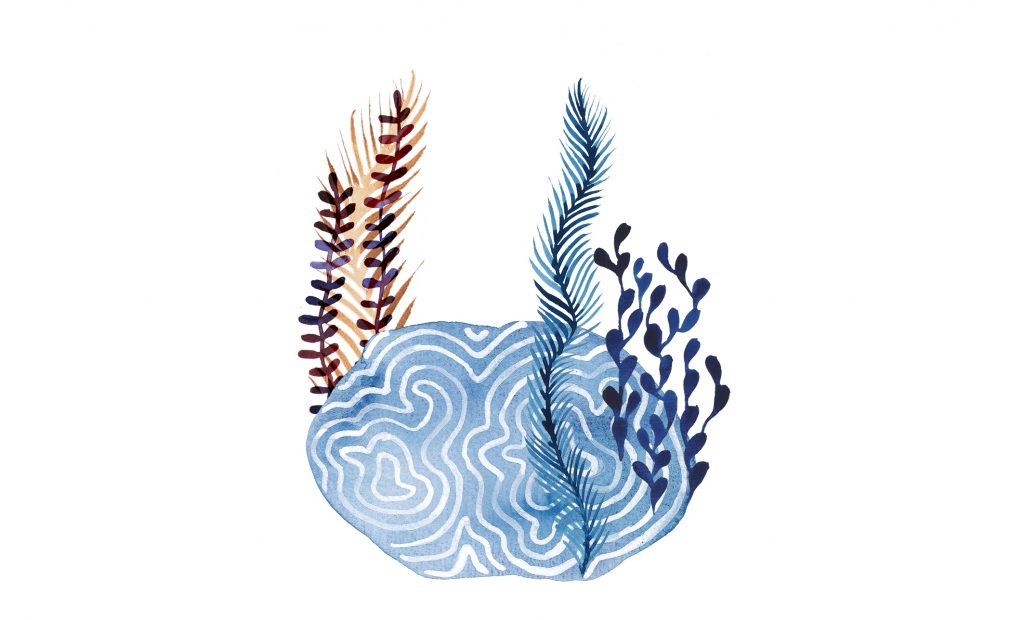Planet Earth is blue
Published on 10 October 2024

It seems natural to begin with an acknowledgment of the ocean’s immensity. To render in your mind distant images of our blue planet, the countries and continents that we call home scattered upon it like a broken biscuit.
The ocean’s breadth is a tangible reality, its power palpable in the hiss and tumble and roar. It’s no wonder that when we stand before its vast body, we struggle to imagine how the ocean could ever suffer at our hands – how what we do, and take from it, could be anything but insignificant.
Just as we can’t see the carbon in the atmosphere, we can’t see the impact it’s having on what lies beneath. We can’t see the ocean warm and acidify; at least not until a coral reef has been lost, until the arms that were once shelter for a diverse school of life have withered and turned white.
It’s tempting to believe that sheer size will protect the ocean from climate change, but in truth it is a sensitive giant. An ecosystem of interdependence, each creature and current held in harmonious balance. This balance reaches beyond the shore, encompassing our entire planet, and all that depends on it.
⥉
The ocean is the lungs of the Earth, not only providing half the world’s oxygen but absorbing vast amounts of carbon dioxide and excess heat from the atmosphere.
Blue carbon is carbon captured by oceans and coastal ecosystems. Ocean plants take in carbon dioxide and give off oxygen, just like land plants, but they are even more effective. Ocean vegetation can absorb four times more carbon than forests. Blue carbon sinks – mangroves, saltmarshes, seagrasses and estuaries – capture 1 billion metric tons of carbon every year.
(bluethefilm.org)
⥉
Our enduring reliance on fossil fuels has put a strain on this relationship. The elevated levels of carbon dioxide in the atmosphere mean more is being absorbed by the sea; the consequence being a warmer and more acidic ocean. A two degree rise in air temperature might sound relatively minor to us on the land, but for the ocean it is like living with a constant fever.
Coral reefs are particularly sensitive to climate change. Over the past two decades we have seen the increase in ocean temperature trigger mass coral bleaching events all over the world. Bleaching occurs when corals expel the algae (zooxanthellae) living in their tissues causing the coral to turn white. If the thermal stress continues, the coral eventually dies.
Coral bleaching isn’t a mere loss of beauty. A quarter of all marine life call reef eco-systems home. Once bleached these once vibrant metropolises are abandoned, leaving behind nothing but a chalky carcass.
⥉
And then there’s plastic. All the plastic ever made still exists on the planet in some form today.
More than eight million tons of plastic enters the ocean every year. A small percentage of this sits on the surface in garbage patches, however the majority splits into bite-sized chunks known as micro plastic. Micro plastics are now being ingested at every link in the food chain. It has been found in the tissues of zooplankton and the bellies of seabirds. It has been found in the fish that we eat and the water that comes out of our kitchen tap. Inevitably, it’s been found in the human body.
Plastic pollution has become a global issue, with one study estimating that by 2050 there will be more plastic in the ocean than fish. While this certainly echoes our destructive appetite for plastic, it also illustrates the immensity of what we are taking from the ocean. With the implementation of modern fishing practices, we have been able to scour the sea like never before. The enormous nets that trawl behind factory fishing vessels do not discriminate, and as a result endangered sharks, turtles and dolphins end up as by-catch, thrown back into the sea either dying or dead. Over the last fifty years half of all marine life has disappeared. This loss of biodiversity threatens not only the marine eco-systems themselves, but the millions of people that rely on fishing for their livelihood.
⥉
Over the last century our relationship with nature has been defined by demand. We’ve told stories of conquer and control, of ruthless extraction and endless growth. What’s missing from this story is the understanding that we must give as well as take, that nature does not exist for us, but with us.
The degradation of the ocean isn’t an abstract issue. It effects all life on Earth, and yet the voice of our species will be the only one to be heard. Our blue planet is resilient. If given the chance, the ocean can heal and regenerate. But we, who have created the imbalance, must first allow this restoration to begin.
⥉
Taking care of the blue planet that takes care of us


There’s a lot that we can do alone. There’s even more that we can do together. If you’d like to learn more about what we can do to protect the ocean, head to ‘bluethefilm.org’. Get your friends and family together to watch the documentary. Choose re-usable alternatives to single-use plastic. Support local and organic growers. Join your local climate action or ocean conservation group. Action is the best antidote to despair. It doesn’t matter where you start, just so long as you do.
Words by Melanie Hunter
This article is reproduced with permission from Radical Magazine edition two 2019 @radicalmagazine